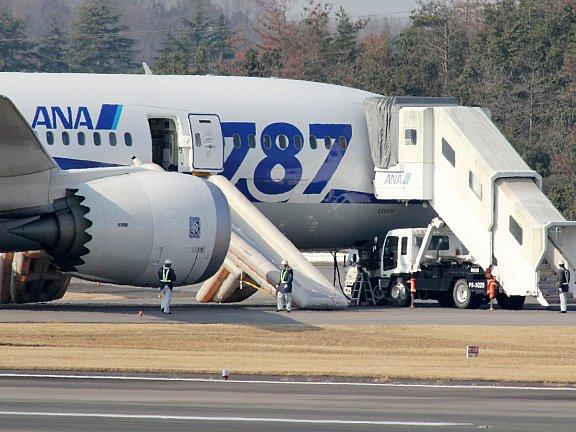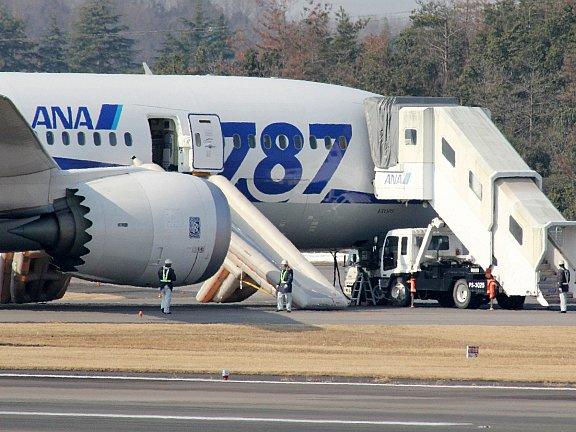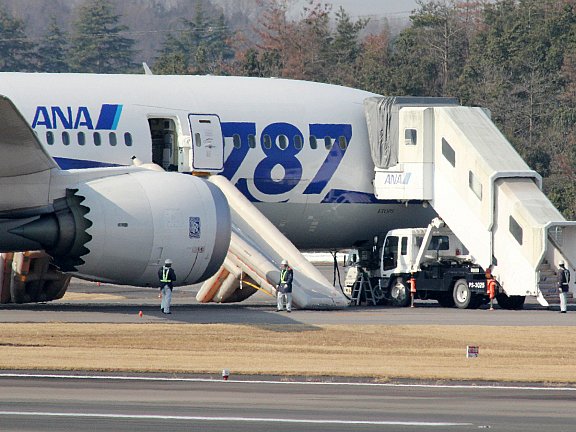Boeing wanted to revolutionize air travel with its 787 Dreamliner. Instead, the multibillion dollar project is turning into a nightmare after a Jan. 16 directive by the Federal Aviation Administration (FAA) grounded the fleet of 49 airplanes in service.
“We are confident the 787 is safe and we stand behind its overall integrity. We will be taking every necessary step in the coming days to assure our customers and the traveling public of the 787’s safety and to return the airplanes to service,” said Boeing Company Chairman, President and CEO Jim McNerney in response to the directive issued by the FAA Jan. 16.
The FAA on the other hand was forced to act after a 787 Dreamliner had to undertake an emergency landing in Japan earlier Jan. 16. According to reports by All Nippon Airlines, there were fumes in the cockpit of the airplane shortly after takeoff, which were later traced to a smoldering lithium-ion battery. It was the second incident of such a nature after another Dreamliner reported problems with a lithium-ion battery before takeoff in Boston on Jan. 7.
“As a result of an in-flight, Boeing 787 battery incident earlier today in Japan, the FAA will issue an emergency airworthiness directive (AD) to address a potential battery fire risk in the 787 and require operators to temporarily cease operations. Before further flight, operators of U.S.-registered, Boeing 787 aircraft must demonstrate to the Federal Aviation Administration that the batteries are safe,” the FAA said in a press release.
In principle, the FAA directive only concerns the six planes operated by United Airlines, but other regulators worldwide quickly followed suit. As a result, all 49 Dreamliners in operation are now grounded until further problems can be ruled out. The FAA announced it will work together with Boeing and the carriers to solve the problem “as quickly and safely as possible.”
Dreamliner’s Special Design Causes Weakness
Not unlike many other new aircraft, the 787 has suffered from numerous technical difficulties since the first Dreamliner started commercial flights in September 2011. The problems that forced the FAA to act, however, concern only the Dreamliner, because it is the first plane to utilize lithium-ion batteries.
These batteries, also used in cellphones and laptops, are more likely to catch fire or otherwise malfunction than the traditional nickel-cadmium batteries. Boeing, however, needed more efficient electricity storage for less space because the main selling point of the Dreamliner is fuel efficiency.
To design a more fuel-efficient aircraft—Boeing claims the 787 consumes 20 percent less fuel than its competitors—engineers needed to drastically reduce its weight. One of the measures taken was to reduce the use of hydraulic systems and substitute them with electric ones, which weigh less.
Supplying the cabin with airflow is one system that is electrically powered in the Dreamliner. If all systems are running, the electricity comes from a special turbine at the rear of the aircraft. The batteries that are now under review are there mostly for emergency or backup purposes.
Incident Adding to a Long List of Delays
As it stands, these incidents are already a disaster for Boeing, which first started the Dreamliner project in 2004. All Nippon Airways had expected to start flying the airplane in 2008, but only got its first delivery in September 2011.
At this moment, 848 planes have been ordered since 2004, but only 50 have been delivered. Strikes and difficulties at individual component makers caused a long chain of problems. Just as Boeing is ramping up production from the current 5 planes per month to 10 planes per month at the end of 2013, the problems with the battery could have far-reaching implications.
Fuel efficiency was at the core of Boeing’s vision when it designed the plane. It pioneered new ways to reach a much lower weight and therefore fuel consumption. The lithium-ion batteries are an integral part of the electrical system that significantly helps to reduce weight. If there is no easy way to fix or replace the batteries, Boeing might have to redesign the whole airplane.
The stock market, however, seems to have confidence in Boeing and the Dreamliner. The company’s stock (NYSE: BA), which went down 3.8 percent Jan. 16, recovered some of its losses to gain 1.2 percent on Jan. 17, closing at $75.26. Shares in the aerospace company are basically unchanged year-to-date and have risen less than 1 percent over the past year.







